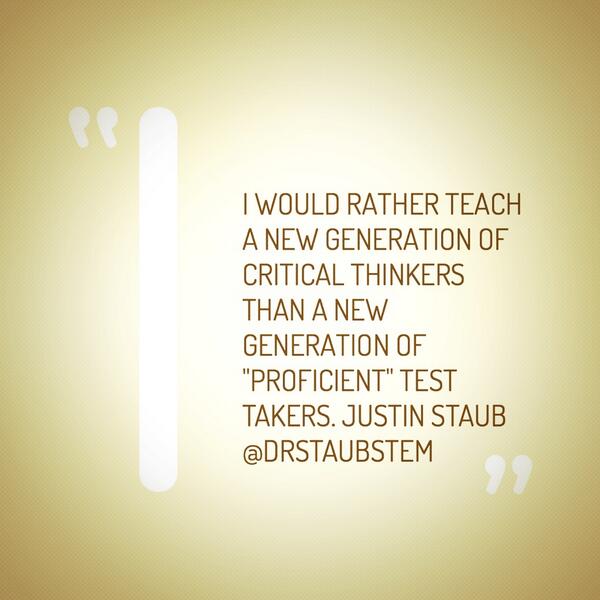I had a light bulb moment a week and a half ago when talking with some colleagues. The conversation was around looking at the desired outcomes of meetings and including those outcomes in the agendas. It made perfect sense to me. Of course we want the participants in a meeting to know what we the presenter expect them to get out of the meeting. I quickly implemented this approach to my agenda for the department chair meeting. My meeting agendas from now on will not only include the topics of discussion, but the outcomes I want the participants to have. I can't help but see a connection to lesson planning.
We have spent considerable time over the past few years looking at daily objectives. Teachers daily objectives now include an observable verb for the students. Let's see if we can take the objective one step further. Begin to think of ways you can tweak your objectives to read in a more outcome based fashion. Objectives written with an observable verb are valuable in the sense that you know what you expect to see students doing and students know what they will be doing, but we need to go further than that. You have to ask yourself what is the outcome I want for my students. When we focus on "topic A" today what outcome do I want? Determining what you want your outcome to be, will then guide you in the process of determing what activities you will do with your students to get to that desired outcome. Additionally, if you have a clear outcome you will be able to design assessemnts appropriate to determine if you have met that outcome.
Blended Learning Symposium:
I left early on Friday to head down to San Jose for the Blended Learning Symposium. As usual I took my notes via Twitter. You can see the entire Twitter feed for the symposium at #CaliBL14. For those of you still not yet on Twitter, I have included my Twitter notes below to give each of you an overview of the highlights from the presentation. Alan November was the keynote presenter and solidified for me that our focus on tech integration is not only a smart path for our students, but a necessary path.
All of you know that I like to think outside of the box and take on challenges. So,after listening to Alan November, I am very excited to work on ways of changing the classroom environment from the antiquated desks in rows format to a more fluid and ergonomical furniture setup that lends itself to collaboration and tech integeration. :) :) :) To quote educator George Cuoros, "We are more likely to have creative students when we have creative teachers. If we want kids to think different, we need to first."
My Twitter notes:
#CaliBL14 Example of furniture redesign. Milpitas Unified. @rhredhawk @TimGoree pic.twitter.com/ZveFdQ51qP
#CaliBL14 How do we maximize the time in class? Use technology to ensure that time in school is the most PRODUCTIVE & MEANINGFUL
#CaliBL14 Just as we #tweet at our conferences let's allow our students to #tweet what they are learning. Impact MORE at once
#CaliBL14 Let's rethink the furniture make up in our classrooms. Design learning spaces that reflect collaboration.
RT I believe @DrStaubSTEM has hit one out the park on this!! I'd suggest reading thru his timeline. Great stuff. pic.twitter.com/LgZrBQUOBr






No comments:
Post a Comment